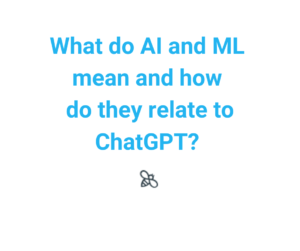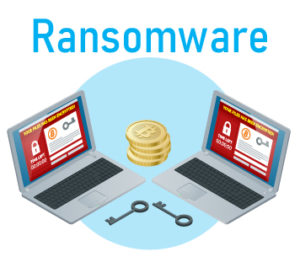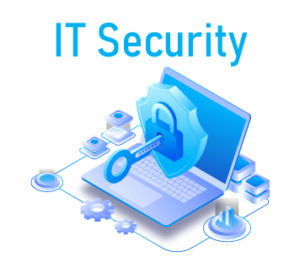The phrase “Internet of Things” was first used by Kevin Ashton, most likely in 1999, as the title of a presentation he gave at Procter & Gamble. When he was a part of the company, Ashton came up with the idea of putting RFID, an intelligent barcode, on every lipstick they produced so that they could retrieve information about the number of products sold, and when to replenish the shelves at any given point of time. He very rightly claimed that such data could solve many problems in everyday life.
Today, billions of devices are an integral part of the Internet of Things platform, using embedded hardware and software to send and receive data through various communication protocols. So, they could also use our smartphones to access the internet, which would again be connected to some other piece of hardware that would be in our household, for example, and act as a central part of the network.
Many people dream of “smart homes” where every device would automatically function when required. The wake-up alarm and the coffee machine would be programmed to make the day easier, the lights would come on when the owner approaches the house, and a computer device would answer his voice commands, read messages and select the television channel on demand while he prepares the dinner. For decades, such instances were a part of science fiction movies, and today they are already a part and parcel of our reality, and would not be fascinating any more in near future, and all modern technology, which will be an integral part of that future, forms a database they term, the Internet of Things.
The Internet of Things (IoT), also called Internet of Everything (IoE), is made up of all devices that can connect to the network, collecting, sending and operating according to the data they collect from the environment, using built-in sensors, processors, and communication hardware. These devices, popularly known as “connected” or “smart”, can sometimes “talk” to other connected devices, using a process called machine-to-machine (M2M) communication, and operate on the basis of the data received from one of the other devices. Users can set up these gadgets, give them instructions, or access data, but the devices generally work independently. Their existence and connectivity have become possible, thanks to the components available today and the constant online user presence, both at home and in the workplace.
We can simply say that IoT is a combination of hardware, software and applications. IoT also makes up a huge network that can be connected to almost anything, and the classification of connections is very simple:
- The connection between man and man
- The connection between the device and the people
- The connection between the device and the device

Internet of Things and Businesses
IoT provides businesses with unprecedented opportunities to collect data and automate processes. It also offers
businesses the opportunity to develop new products and services. These are just some of the ways IoT devices can change the way we do business. IoT devices will have more and more impact on the business industry in days to come, even on those businesses not operating with in the field of technology.
- Working Remotely
IoT has already increased the number of people working from home. With access to a varied kind of devices in the office, it would be possible to complete more and more tasks remotely. Remote workers are often more efficient and cost-effective compared to the full-time workers in companies. Thus, IoT could have a beneficial impact on the baseline of most of the companies.
- Increased Productivity
Smart devices will increase productivity in all types of businesses, thus improving data analytics that will in turn simplify many tasks. All this can potentially lead to a reduction in the number of employees in some areas of business.
- Improved Customer Engagement
The same technology that currently allows consumers to connect to smart home devices also allows companies to monitor such devices. This technology allows, for example, modern cars to alert the driver when a system is down or when the car needs servicing. Customer systems will be notified when home appliances need repair or a replacement. This will provide better customer service and provide new marketing opportunities.
- Improved Security, Management and Inventory Tracking
Keeping track of inventory and assets has been a major problem for many businesses for a long time. The shipping industry is already using high-tech equipment to monitor and manage container movements due to the high volume of work involved. With IoT, this type of technology will become available for even the smallest of resources. This will relieve workers of many manual tasks such as stock checks. It will also reduce the theft of inventory and assets.
- Shorter Buying Cycles
The Internet of Things has already changed the way consumers buy products. The shopping cycle has become shorter. Targeted advertising enabled by IoT accelerated the decision-making process while shopping. Some people are already used to verbally order goods via smart devices, and to get it on the same day. Increasingly, businesses will need to use smart technology to keep up with consumer demands and stay competitive.
- Create New Consumer Demands
As consumers todays become more and more familiar with the IoT technology, they will start demanding products that they currently can not think of. The latest Smart Fridges, for example, now know what items you are missing and create a list of items you need to buy. This technology will certainly be implemented in all smart refrigerators to be sold in the near future.
- Business process monitoring
Everything that is measured and monitored can be improved. Production is already highly monitored, but IoT will bring make detailed monitoring possible in the other areas of the business, including office work and field operations. Sensors that can be applied to individuals and that can track activities and record information are slowly gaining momentum. These specialized sensors and communications through them can provide useful data to deliver deep analytics that companies can leverage – which in turn can improve productivity and reduce costs.
IoT in everyday life
When it comes to our home and office life, it is in this area that the Internet of intelligent devices is most recognized by the public. The application is really diverse, and here are some examples:
- Smart Thermostat
Smart thermostat is one of the first home and office IoT products. This smart device, after just one day of use, remembers our schedule and habits and adjusts the temperature of the room in which we are staying (all with the aim of saving us time and electricity).
- Smart Lock
A smart lock will lock the door automatically when we go out and unlock it just before we head into the house. We will also be able to unlock and lock the door using a special application on the phone.
- Smart Fridge
One of the most interesting IoT products is a smart fridge that sends data based on Wi-Fi connection on what food you have in your fridge, their shelf life, and can suggest recipes.
- Home Voice Controller
Home Voice Controller is a smart IoT device which allows the user to enjoy features like media, alarms, lights, thermostats, volume control and much more functions just by their voice.
- Doorbell Cam
Doorbell Cam is another effective IoT innovation. It allows you to answer your door from anywhere or remote location. It constantly checks your doors and also captures motion changes in your doorstep.
- Mobile Home Robot
Mobile Home Robot is the first of its kind home robot and the most popular one. It is specifically designed for entertainment. This kind of robot interacts with the users and captures moments all around the house daily.
- Smart Light Switch
Smart Light Switch helps a user to manage the home lights from the wall, a mobile phone or by using thier voice. This smart light switch connects to the user’s existing home Wi-Fi network to give wireless access of the lights – with no subscription or hub required.
- Air Quality Monitor
Air Quality Monitor is a reliable IoT device which is helpful in measuring indoor pollution and leads to improved air quality in houses, workplace, and indoor public spaces. It often gives accurate results.
- Smoke Alarm
Smoke Alarm is a very useful IoT device. It is a smoke alarm that thinks, speaks and alerts your mobile phone about any un-wanted emergencies in your home. It automatically tests itself.
- IoT Security Device
It is the Smart Home Cybersecurity Hub that protects various Internet-connected devices from malware, hacking of passwords, identity theft, spying etc.
Industrial IoT
Industry is the area where the implementation of the IoT solution will be by far the most massive. A large number of jobs will be automated, thanks to this technology, which will significantly increase efficiency and productivity (and ultimately profit). The entry of another new technology into the production system will certainly eliminate a large number of jobs among simple manual jobs. On the other hand, this does not mean that there will be no need for some new jobs that will require some more complex skills. Ultimately, it is highly likely that the number of jobs will actually increase after the mass deployment of IoT solutions. The main applications in the industry are sensors built into machines that can easily locate the fault (some that can even warn in advance where the fault might first occur), resulting in a significant amount of savings in machine repair and maintenance. Sensors can also be used to test the composition and quality of land. Farmers in the advanced countries are already using such sensors quite efficiently.
Smart cities with IoT
The concept of smart cities aims to adapt city life to our digital habits with the help of IoT, but also to give outdated city infrastructure some new features. Sensors in the cities monitor a wide variety of conditions, from whether the containers are full and when they need to be emptied, to how much carbon dioxide is in the air. With smart solar benches, we can charge phones and track environmental quality data, and the IoT parking system will make sure we no longer wander for hours looking for a parking spot. By placing sensors directly in the concrete structures of buildings and bridges, city authorities can monitor the state of the infrastructure in real time and respond precisely where and when necessary. Particularly important is the application of the IoT solution for crisis management.
Smarter healthcare with IoT
The implementation of IoT in healthcare began several years ago, and it is expected that such solutions will be increasing, especially when we consider that some companies, which are not a primary area of healthcare, are involved in the development of their IoT healthcare programs. Smart hospital beds monitor the patient’s condition and send information directly to the doctor, and wireless insulin pumps after measuring blood sugar give the patient the required dose of insulin. The market for wearable fitness devices has also grown significantly over the last few years, which are also becoming a part of the IoT system. Some insurance companies increase premiums to clients who put data on their smart fitness classes at their disposal (as evidence that they are taking care of their health and that they are less risky policyholders).
IoT Disadvantages
Before IoT fully enters all the pores of our lives, it is necessary to curb the euphoria and consider some not so great aspects of this idea as well. First, by creating a world that is so connected, we can (completely contrary to our original intent) compromise our security. Many experts warn that IoT systems will become a constant target of hacking attacks, which can be very dangerous. . Here are some disadvantages:
- Internet of Things devices may take control of our life in the forthcoming period with increasing AI technology
- IoT devices does not have any international compatibility standard
- Reduction in the employment of manual tasks thus resulting in job reductions
- IoT devices may get affected by privacy and security breach
- They may become highly complex resulting in failure
- Reduced safety for users
Conclusion
The Internet of Things technology provides access to everyday information in a way that has not been recorded in human history so far. So, today we can remotely monitor our home and our family members to make sure they are safe and improve the way we do business through the availability of such information.






